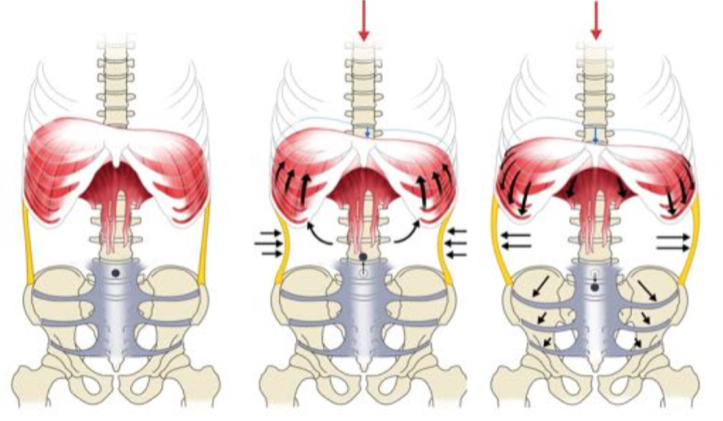Your core is like your Instapot
Why your Instapot is like your core?
Are you under enough pressure?
One of my favourite kitchen appliances is an Instapot. It cooks rice perfectly at the press of a button.
It’s too bad our bodies weren’t like that. That one exercise could fix our problems.
Our core is very similar to an Instapot. It's a pressure system.
A few weeks ago my Instapot failed. Meaning I thought the lid was going to blow off. Steam came out around the edges. It was frightening.
I thought the whole thing was going to Moby Dick on me.
I tried cleaning the steam release valve and replacing the gasket. After two more incidents, I decided to retire it.
Our core can have a hard time managing pressure. For so long we’ve been told to pull in our stomachs and pull up our pelvic floors. As women, most of us have been wandering around doing it most of the time anyway.
We've all been cultured like fine yoghurt to take up as little space as we can in the world.
Our culture puts a layer of pressure on us. This can cause us to pull away from external pressure. Literally narrowing ourselves and creating immense internal pressure in our bodies. Have you ever been curious about the word “uptight”?
Our bodies are shaped and formed by our culture whether we are aware of it or not.
Cultural messaging tells women we are not ok the way we are.
What a conundrum.
The effect of this constant thought pressure on the pressure system of our cores is something that is rarely addressed or talked about.
It’s sad. And when we do it’s incredibly liberating
Your core is a bodywide system of tissue that acts like an Instapot to produce and distribute pressure around the body where needed.
Babies are masters of the core.
Babies learn to manage internal pressure and external forces. In fact, it’s what allows them to learn to move.
If they need to move an arm, the core turns on courtesy of a reaching and pushing action.
They don’t need to think about it. It's a beautifully coordinated Wizard of Oz behind-the-curtain kind of event.
As adults, most of us have lost our ability to sense ourselves unless we are in pain. And PAIN is a very crude and undifferentiated sensation.
To improve the function of our core we need to relearn how to sense our core, relax the hypertonic muscles that put the brakes on movement and engage the sleepy ones that like to hibernate.
The good news is we can get our inner Instapot working again.
It's figurueoutable.
It’s not a magic fix like a pill or a surgery which both have known side effects. It’s an inner job of relearning yourself. Unwinding all that culturally imposed tension. And of course, releasing all the pressure we put on ourselves.
Who would want to do that?
Someone who wants to age well and keep doing the things they love.
I know most adults don’t like to think of themselves returning to reviewing things they learned in infancy, but the great Somatic teachers like Moshe Feldenkrais, Thomas Hanna, and Bonnie Bainbridge Cohen knew the effectiveness of exercise that was oriented towards self-awareness rather than going faster, harder and further.
Here’s a diagram of your core. Notice the arrows…they are pressing out. Not pulling in.
Here is a core with optimal pressures
Leaders in physical therapy science are questioning the pull your navel to your spine approach to core education. Saying instead, we need to sense where we don’t have adequate pressure in our abdominal wall and practice the skill of creating tension in the abdominal wall with our breath. Then maintain the tension and move a limb without losing the tension.
Here’s an image of a core at rest on the left, a core using a pulling in strategy in the middle and a pushing out strategy on the right.
Not all tension is good or bad.
I am using the word tension as intentional tension.
The tension we consciously produce rather than the tension we accumulate from unprocessed emotional states. Like the tension in our necks or shoulders.
Anyway, that’s enough of a taster for now. Next week I’ll share a quick movement lesson that will help you let go of some of that kind of tension so you can learn how to produce the good type.
So you can learn to be a master of your forces and not a victim.


